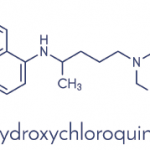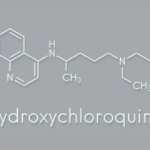Methods: Patients with SLE from the multiethnic LUMINA (LUpus in MInorities: NAture versus nurture) cohort were studied. A case-control study was performed within the context of this cohort in which deceased patients (cases) were matched for disease duration (within six months) with live patients (controls) in a proportion of 3:1. Survival was the outcome of interest. Propensity scores were derived by logistic regression to adjust for confounding by indication as patients with SLE with milder disease manifestations are more likely to be prescribed HCQ. A conditional logistic regression model was used to estimate the risk of death and HCQ use with and without the propensity score as the adjustment variable.
Results: There were 608 patients, of whom 61 had died (cases). HCQ had a protective effect on survival (odds ratio [OR] 0.128 [95% CI, 0.054–0.301] for HCQ alone and OR 0.319 [95% CI, 0.118–0.864] after adding the propensity score). As expected, the propensity score itself was also protective.
Conclusions: HCQ, which overall is well tolerated by patients with SLE, has a protective effect on survival which is evident even after taking into consideration the factors associated with treatment decisions. This information is of importance to all clinicians involved in the care of patients with SLE.
Commentary
This is the second case cohort study published on the beneficial effects of HCQ on survival in SLE and is important in guiding the use of this agent.
The first study, which was published last year by Ruiz-Irastorza et al., presented a prospective cohort of 232 Spanish SLE patients and reviewed the endpoints for thrombosis or death due to any cause.1 In this observational study, 99% of the women were Caucasian and the majority (64%) had received anti-malarials. Taking anti-malarials was protective against thrombosis (HR 0.28, 95% CI, 0.08–0.90) and cumulative 15-year survival rates were lower for lupus patients who had never received anti-malarials than for those who had. A propensity score was used to adjust for confounding variables, including the likelihood that patients treated with anti-malarials would have milder disease and therefore a better outcome.
Dr. Alarcon et al. studied a lupus population that is more typical of what American rheumatologists encounter. The LUMINA cohort is a multiethnic cohort of longitudinally followed patients with SLE. The five-year study presented in this paper was a nested, case-control study where the deceased patients were cases and three randomly chosen live patients were selected for each case. As expected, deceased patients had more severe disease and were more likely to be poor, lack health insurance, and have lower socioeconomic status and lower educational achievement. All of these risk factors have been associated with decreased risk of survival, both individually and together.



